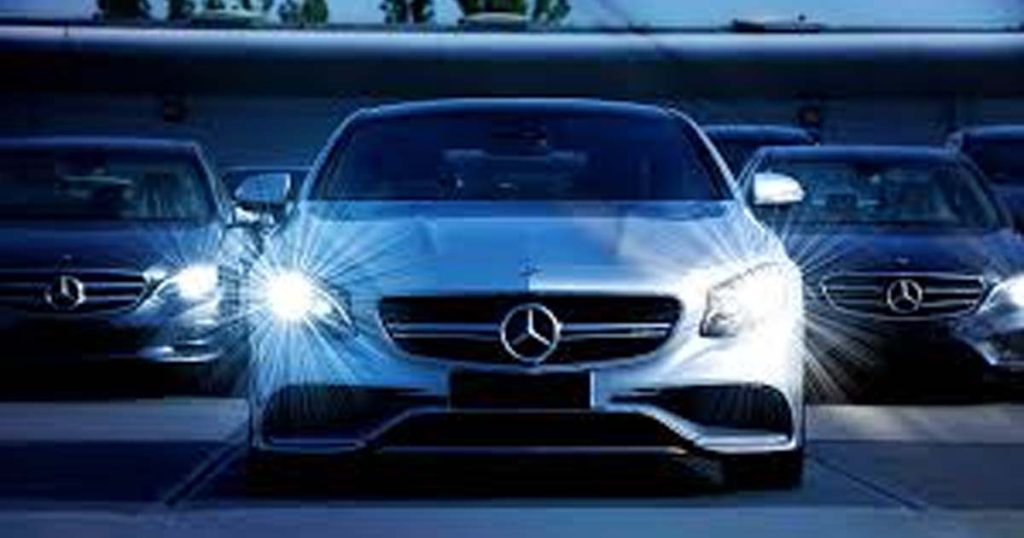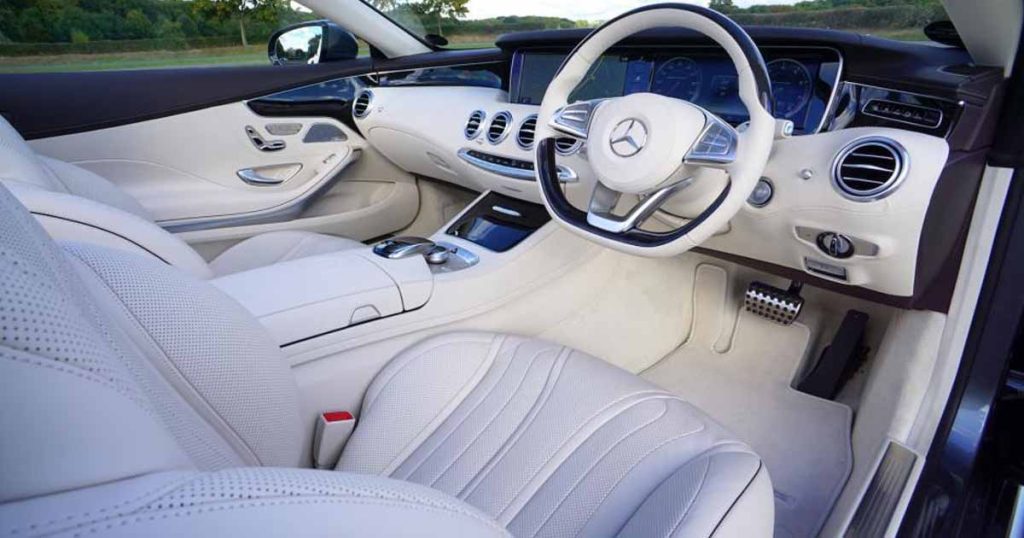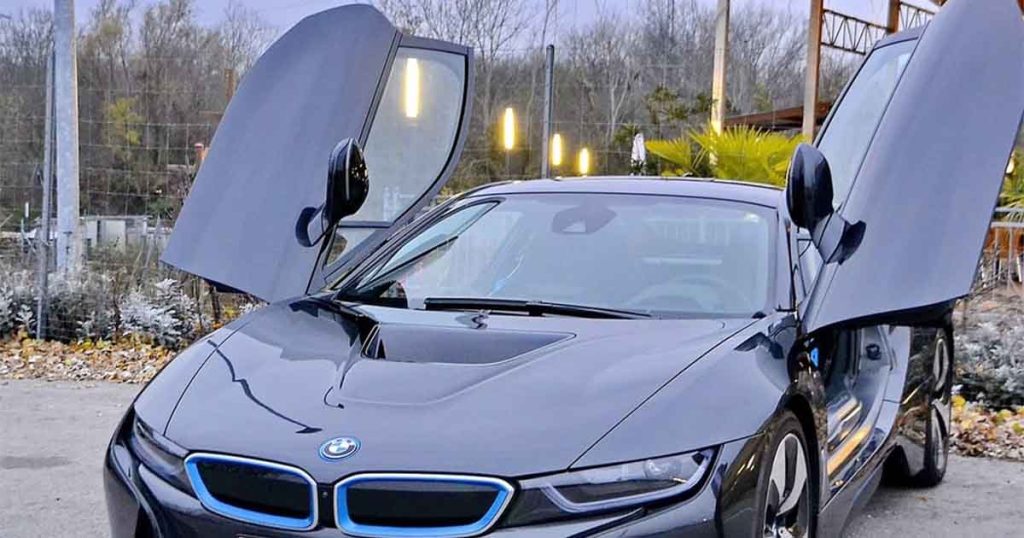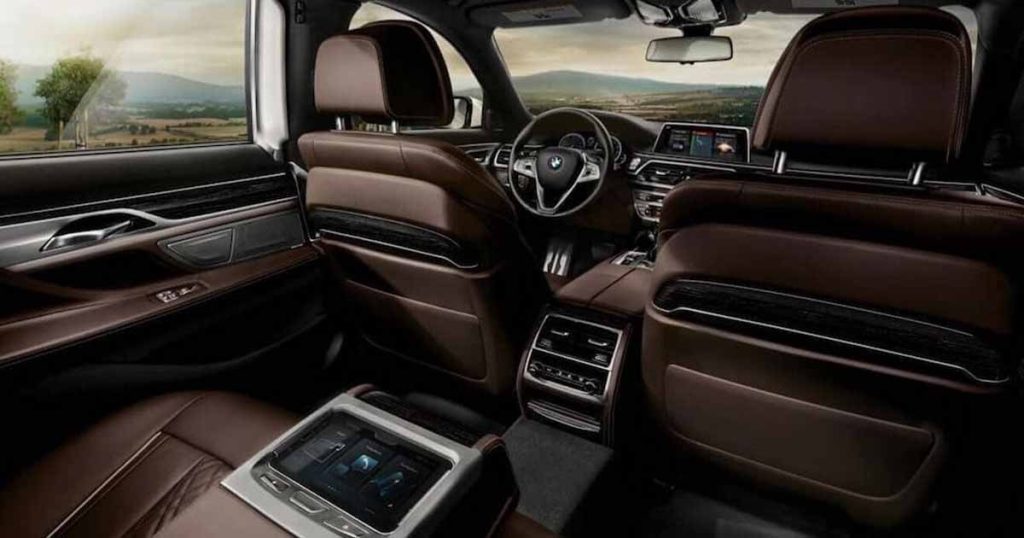Car Buying Guide to Save Big in 2025 : The automobile market of 2025 is undergoing a trans formative shift, and purchasers are at a special crossroads.
The automobile market of 2025 is undergoing a trans formative shift, and purchasers are at a special crossroads. The fast improvement of technology is improving vehicle offerings, from electric lorries (EVs) that assure performance and sustainability to wise features like self governing driving systems and advanced infotainment.
Meanwhile, worldwide financial turbulence has created an environment where dealerships aspire to push inventory, leading to a purchaser’s market ripe for settlement. Simultaneously, the influx of new designs from high end sedans to rugged SUVs means that purchasers now have more options than ever.
This extensive choice, combined with establishing financing alternatives, provides possibilities to strike offers that were when unthinkable. Browsing this vast landscape needs more than simply impulse; it requires understanding.
In 2025, purchasers must remain informed about the most recent market trends, comprehend the subtleties of vehicle devaluation, and identify rewards makers provide. Those with research studies can determine the correct time to buy, recognize the best deals, and choose a car that aligns with their budget plan and way of life.
For the modern automobile consumer, success hinges on tactical planning, sharp settlement, and a deep understanding of the brand-new car purchasing environment.
Why 2025 Is a Unique Year for Car Shoppers
Two thousand twenty-five supplies a special chance for car shoppers as car manufacturers fast-track their shift to electrical vehicles (EVs) while still dealing with a surplus of conventional gasoline-powered cars. Whether a purchaser chooses a reliable internal combustion engine (ICE) vehicle or checks out the benefits of an electric car, merging these market dynamics provides significant savings and essential rewards.
Research First: Information is Financial Power
Equipping yourself with comprehensive specifications, reliability scores, and actual market values is essential to becoming a savvy, positive car buyer. Sites like Consumer Reports, J.D. Power, and industry-specific online forums offer crucial insights into the dependability of various makes and designs.
Online platforms such as Kelley Blue Book, Edmunds, and TrueCar provide upgraded market costs, guaranteeing you understand the affordable worth of any lorry you’re considering. Geared up with these insights, you can approach a dealer prepared to exercise with self-esteem, understanding the automobile’s cost and the used market benefits.
Setting a Realistic Budget: Beyond the Sticker Price
The auto-acquiring treatment starts with the cost tag. However, this is the first chapter in a much bigger monetary story. When setting a budget, it’s essential to consider more than just the advance expense of the cars and trucks.
Some lorries require specific care or higher-quality parts, which can add up over time. Researching these factors can help avoid undesirable surprises after the vehicle is purchased.
Electric automobiles may incur particular taxes or costs to compensate for lost gas taxes, which is the money center’s job. Furthermore, suppose you’re thinking about an electrical automobile (EV). In that case, the expense of setting up a home charging station might be substantial, specifically if your home does not currently have a dedicated electrical circuit.
By considering all of these continuous costs and including them in your budget plan, you’ll get a clearer picture of what you can really manage, assisting you in avoiding monetary strain in the long run.
Read More: Car financing & insurance
New vs. Used Cars: Which Saves You More in 2025?

When buying a used car, particularly one that is just a few years old, purchasers can take advantage of the rapid devaluation that brand-new vehicles undergo. An automobile’s value generally drops steeply within the first couple of years, implying you can secure a high-quality car for much less than its initial rate.
This devaluation is much more noticeable for electrical automobiles. Due to the fast developments in EV technology and battery improvements, somewhat used EVs depreciate faster than their gas equivalents. This indicates that you can buy a nearly new EV geared up with advanced features, such as better battery life and upgraded infotainment systems, at a fraction of its original price.
The significant benefit of buying a utilized car is the lowered overall cost of ownership. Not only are you preventing the steepest part of the devaluation curve, but you’re also possibly saving money on financing, as used vehicles usually include lower loan amounts and interest rates.
Furthermore, various late-model used cars are still covered by maker guarantees, even more securing the buyer against costly repairs. In 2025, the used cars and truck market will use exceptional opportunities, particularly for buyers searching for a state-of-the-art trip at a fraction of the expense of a new car.
Whether choosing a utilized gasoline-powered vehicle or an EV, the financial advantages of purchasing a little used far surpass the preliminary appeal of a brand-new model. While brand-new vehicles offer the most current technology and service warranties, late-model pre-owned vehicles typically provide the best value for the money.
When buying used cars and trucks, especially those that are simply a few years old, purchasers can take advantage of the rapid depreciation that brand-new vehicles go through. An automobile’s value generally drops steeply within the first few years, suggesting you can protect a high-quality car for much less than its original price.
The crucial benefit of buying a used car or truck is the reduced general cost of ownership. Not only are you preventing the steepest part of the devaluation curve, but you’re also possibly saving on funding, as used cars frequently come with lower loan amounts and interest rates.
Understanding Depreciation Trends in the Current Market
Devaluation is the quiet killer of a vehicle’s worth, and its outcome can differ significantly throughout various makes and designs. Some automobiles decrease rapidly, while others keep it with unforeseen consistency. Comprehending devaluation patterns is necessary for making a financially sound automobile and truck purchase in 2025, as it can substantially affect the basic cost of ownership.
High-end sedans are popular for quick decline, typically losing as much as 50-60% of their worth within the first 5 years. The aspect of this is simple: high-end trucks have a high preliminary rate point, and when the attraction of a new, high-end model fades, they tend to decrease at a steep rate. Their repair and maintenance work costs are usually more significant, which can even more dissuade potential buyers in the made-use market.
On the other hand, popular SUVs and practical hybrids show more resilience to depreciation. Cars like the Toyota RAV4, Honda CR-V, and Subaru Outback retain much of their worth over time, even after five or more years. This is due mainly to strong demand in the used market, as these designs are highly demanded for their reliability, adaptability, and all-weather capabilities.
Another sector that fares much better than the majority in regard to devaluation is the hybrid car category. As fuel rates vary and more buyers look for environmentally friendly options, hybrids like the Toyota Prius and Honda Insight remain in need. Their fuel performance helps them keep worth longer, and many buyers see them as a sustainable financial investment.
Knowing which models withstand devaluation belongs to finding a financial oasis in a consumer desert. The secret to decreasing depreciation-related losses is selecting an automobile that holds its worth well over time, whether a highly popular hybrid, an iconic SUV, or a practical sedan. Buyers can balance the financial hit that includes devaluation by picking sensibly, ensuring that their purchase is a smarter, long-lasting investment.
Certified Pre-Owned: The Hidden Sweet Spot
In 2025, Certified Pre-Owned (CPO) programs will become one of the best-kept secrets in the automobile buying world. They supply the best balance between the peace of mind of buying a new automobile and the cost savings of purchasing a used car. These programs enable purchasers to enjoy the benefits of a brand-new vehicle without the frustrating costs that come with a new purchase.
What makes CPO cars attractive is a manufacturer-backed guarantee and the assurance that the vehicle has undergone a detailed assessment procedure. CPO vehicles are usually a couple of years of age and are thoroughly vetted by the producer to ensure they fulfill laborious quality standards. These evaluations look at everything from engine health and brake effectiveness to general structural stability, suggesting buyers can rely on the fact that the lorry has been well preserved.
Furthermore, CPO cars often consist of extra advantages such as complimentary roadside assistance, distinct funding alternatives with lower interest rates, and sometimes even complimentary upkeep plans for a very short duration. This added value assists in stabilizing the rate distinction between basic previously owned automobiles and trucks and a CPO model, making it an impressive option for those who desire an automobile that’s close to brand-new without the high expense.
In addition, buying a CPO vehicle minimizes the threat of acquiring surprise problems, which is one of the primary concerns when acquiring utilized cars. With CPO programs, manufacturers back up their warranties and examinations, guaranteeing purchasers not to enter a potential money pit.
For automobile purchasers in 2025, CPO programs represent a sweet spot between new and previously owned lorries. They have a special opportunity to obtain an automobile with the most existing functions and innovation while delighting in the cost benefits of a used car or truck. Whether considering a high-end sedan or a practical hybrid, the CPO course offers a tactical acquisition combining guarantee and financial savvy.
Depreciation is the quiet killer of a car’s and truck’s worth, and its effect can vary considerably throughout numerous makes and models. Comprehending devaluation trends is necessary for making a financially sound automobile purchase in 2025, as it can dramatically affect the overall expense of ownership.
What makes CPO cars so appealing is the combination of a manufacturer-backed guarantee and the guarantee that the lorry has undergone a comprehensive assessment process. For car and truck buyers in 2025, CPO programs will represent a sweet spot between used and brand-new cars and trucks. They use a special chance to acquire a vehicle with the most current functions and innovation while taking pleasure in the price advantages of a used automobile.
Electric vs. Gasoline: Cost Considerations Over Time

The electrical versus fuel debate in 2025 is less about preference and more about nuanced financial calculus. While electric automobiles (EVs) are frequently declared for their lower functional costs, thanks to more affordable fueling (charging) and minimal maintenance requirements, the preliminary rate tag can be a powerful barrier. Even with federal and regional rewards, the price tag of EVs often eclipses that of their gasoline counterparts.
Another surprise cost to consider is home charging infrastructure. Installing a Level 2 battery charger in your home can set purchasers back anywhere from $800 to $2,000, depending on electrical system upgrades and labor costs. The scenario becomes even more complicated for home occupants, sometimes requiring reliance on public charging stations at premium rates.
When examining a five-year cost of ownership, EVs frequently start to expose their advantages. Lower fuelling costs, minimal oil changes, fewer moving parts resulting in less repair work, and tax rewards can tip the balance in favour of electrification. Efficient fuel vehicles, particularly hybrids, have a strong claim with lower purchase prices and widespread fuelling facilities. Choosing between an EV and a gas-powered car in 2025 needs a clear-eyed analysis of your daily commute, access to charging, and long-term monetary blueprint.
Timing Your Purchase: Best Months and Days to Buy
Strategic timing can shave thousands off your next automobile purchase. December remains the indisputable king for car and truck deals as dealerships scramble to meet annual sales quotas and include inbound models. The pressure on sales teams translates into a substantial advantage for buyers who come ready.
It’s not simply about the month. Particular days matter, too. Mondays and midweek days like Tuesday and Wednesday are golden opportunities. Showrooms are quieter, salespeople are less distracted, and managers are more likely to greenlight aggressive offers to keep momentum going.
Layering your shopping method in December, targeting midweek sees, and showing up armed with competitive quotes develops a trifecta of bargaining power. Persistence and timing, when thought about mere high-ends, have evolved into vital weapons for conserving big in the hectic 2025 automobile market.
While electric vehicles (EVs) are typically declared for their lower functional costs, thanks to cheaper fuelling (charging) and minimal maintenance requirements, the initial price tag can be a formidable barrier.
Setting up a Level 2 charger home can set buyers back anywhere from $800 to $2,000, depending on electrical system upgrades and labour expenses. Lower fuelling costs, negligible oil changes, fewer moving parts leading to fewer repairs, and tax rewards can tip the balance in favour of electrification.
How to Leverage Dealer Incentives and Rebates
In 2025, automobile manufacturers are pulling out all the stops to move stock, particularly as they pivot heavily toward electrical fleets. Dealer rewards and maker rebates are powerful tools savvy customers can use to their full benefit. These offers vary from cash-back promotions to commitment advantages for returning consumers and conquest programs that reward you simply for changing brand names.
These rewards aren’t constant across the country. They regularly vary regionally based on supply levels, market requirements, and car dealer quotas. Diving into manufacturer websites, regional dealer ads, and consumer advocacy platforms reveals surprise gems that many casual buyers miss out on.
Another tactical play is stacking many rewards. For example, combining a money refund with a low APR funding deal can significantly magnify your savings.
Financing Tips: Beat the Banks at Their Own Game
Funding can be a peaceful cost-saving engine or a stealthy cost amplifier. Walking into a vehicle dealer without safeguarded funding is like stepping onto a chessboard without knowing the rules. Getting pre-approval from a cooperative credit union or a respectable online loan provider before getting in a showroom is a power moving that wrests financial control back into your hands.
Cooperative credit unions often offer interest rates substantially lower than nationwide banks or dealer-arranged financing. On the other hand, online lending institutions offer you a broader range of completing deals to use throughout settlements.
Constantly evaluate your credit report beforehand, make appropriate mistakes, and have practical expectations for the rate you should have. With competitive offers and credit understanding, you can confidently counter dealership pitches and prevent unneeded funding markups.
Integrating a money refund with a low APR funding offer can greatly enhance your savings. With competitive deals and credit understanding, you can confidently counter dealership pitches and prevent unwanted financing markups.
Dealership rewards and maker refunds are potent tools savvy consumers can use to their full benefit. Diving into producer sites, regional dealership advertisements, and customer advocacy platforms reveals surprise gems that most casual purchasers miss.
Integrating a cash rebate with a low APR financing offer can, in some circumstances, exponentially enhance your cost savings. Armed with competitive deals and credit knowledge, you can confidently counter dealership pitches and avoid unwanted funding markups.
Leasing vs. Buying: Deciding What’s Right for Your Wallet

In the moving automobile landscape of 2025, picking between leasing and purchasing requires a sharp assessment of financial objectives and individual issues. Leasing interests those who savor experiencing the most current designs, innovative developments, and maker assurances without the burden of long-lasting ownership. Particularly for electrical lorries (EVs), short-term leases secure against quick technological enhancements and plunging resale worths.
Purchasing a vehicle stays the reigning champ of long-lasting expense effectiveness. After a loan is paid off, ownership brings flexibility from month-to-month payments and the opportunity to extract prolonged value from the automobile. Buying usually wins if you prepare to drive a vehicle for more than five years and rack up mileage. In this volatile market, where EV evolution is substantial and quick, a strategic lease on an EV coupled with a straight-out purchase of a traditional design might offer the finest of both worlds.
Trade-In Tactics: Maximize the Value of Your Old Ride
Dealers enjoy negotiating trade-ins to their advantage, but with preparation, the balance of power shifts strongly into the purchaser’s court. Before setting foot on a lot, acquire several trade-in quotes from independent appraisers, online platforms, and competing dealers. Services like Kelley Blue Book Instant Cash Offer and CarMax offer fast criteria.
Geared up with documentation and finishing offers, you become a difficult arbitrator, capable of denying lowball trade-in offers and leveraging the cars and truck’s real worth versus the last purchase rate. The goal is simple: every dollar you get on the trade-in is conserved on your next vehicle.
Short-term leases benefit electrical vehicles (EVs) because they protect against rapid technological advancements and plunging resale values.
Equipped with documents and competing offers, you become a difficult mediator, capable of refusing lowball trade-in offers and leveraging the lorry’s real value versus the last purchase cost. The goal is essential: every dollar you get on the trade-in is saved on your next car.
Avoiding Common Pitfalls: Hidden Fees and Upsells
Vehicle dealerships in 2025 have become skilled at camouflaging extra charges under layers of administrative lingo. Paperwork charges, VIN etching, paint security strategies, nitrogen-filled tyres, and extended service warranties are frequently slid into the final paperwork, silently pumping up the real expense. Some add-ons provide minimal worth but can swell your bottom line by thousands if uncontrolled.
Alert buyers must dissect every line product before finalizing. Request a detailed breakdown and challenge anything that feels unneeded. Politely but securely demand the elimination of unwanted extras. Possessing the fortitude to ignore a cushioned deal puts the power back in your hands. Trust your instincts—if something seems suspicious or overly complex, it often is. In 2025’s competitive market, another dealer down the road is likely all set to use a cleaner, more transparent deal.
Final Negotiation Strategies to Save Thousands
Approaching the last negotiations with tactical accuracy can slash considerable sums from your purchase cost. Abandon the fixation on monthly payments dealerships can manipulate loan terms to make even an overpriced vehicle seem inexpensive month-to-month. Instead, focus ruthlessly on the total out-the-door cost, including charges and taxes.
Silence is an underappreciated weapon. After specifying your offer, say absolutely nothing. The psychological pain of silence often nudges salespeople into concessions. Come equipped with competitive quotes from other car dealerships to develop immediate take advantage of. Be prepared to stand up, thank them for their time, and physically leave if your price is not fulfilled often, that motion sets off an abrupt determination to deal. Mastering this delicate dance guarantees you leave the lot with your financial resources intact and a deal you can truly commemorate.
Documents costs, VIN etching, paint defence strategies, nitrogen-filled tyres, and extended warranties are typically moved into the last documentation, silently pumping up the actual price. Instead, focus ruthlessly on the total out-the-door cost, consisting of charges and taxes.
Be prepared to stand up, thank them for their time, and physically leave if your rate is not met– frequently, that movement sets off an abrupt desire to deal.
Post-Purchase Essentials: Insurance, Maintenance, and Registration

The journey toward clever ownership starts as soon as you’ve sealed the deal and taken the belongings of your brand new lorry. Start by shopping for insurance immediately compare quotes from several suppliers to guarantee you’re not overpaying. Look for policies that balance premium cost with thorough protection, particularly if you selected a high-value electrical design that might have unique protection needs.
Next, proactively arrange your first maintenance visit. Even with extended maintenance periods regular in 2025, establishing a relationship with a trusted service centre early safeguards your truck’s health. Routine checks can record minor issues before they blossom into pricey repair work.
Stay ahead by keeping copies of all purchase files convenient and understanding local DMV timelines. Managing these fundamentals right away ensures your ownership experience remains smooth and trouble-free.
Conclusion: Drive Away Smarter, Not Just Cheaper
In the automobile landscape of 2025, acquiring an automobile goes beyond mere transaction; it requires tactical ability. Mastering the art of timing, comprehending moving market dynamics, and working out unyielding accuracy can help you save considerably without sacrificing quality.
This isn’t about looking for offers through blind luck; it’s about launching calculated knowledge at every stage of the buying journey. From assessing devaluation patterns to leveraging car dealership rewards and inspecting concealed costs, each deliberate move enhances your monetary standing.
Let every mile you drive ahead be a quiet homage to your astuteness, preparation, and hesitation to opt for less. In 2025, drive away not just with a new lorry but with the happy understanding that you outmanoeuvred the system.
The journey toward smart ownership starts as soon as you’ve sealed the offer and taken ownership of your new automobile. Next, proactively arrange your first upkeep visit. Even with extended upkeep intervals standard in 2025, developing a relationship with a trusted service centre early safeguards your lorry’s health.
<script type="application/ld+json">
{
"@context": "https://schema.org",
"@type": "BlogPosting",
"mainEntityOfPage": {
"@type": "WebPage",
"@id": "https://cardsinspired.com/car-buying-guide-to-save-big/"
},
"headline": "Car Buying Guide to Save Big in 2025",
"image": [
"https://cardsinspired.com/wp-content/uploads/2025/05/Car-Buying-Guide-to-Save-Big-in-2025-4-1.jpg",
"https://cardsinspired.com/wp-content/uploads/2025/05/Car-Buying-Guide-to-Save-Big-in-2025-1-1024x538.jpg",
"https://cardsinspired.com/wp-content/uploads/2025/05/Car-Buying-Guide-to-Save-Big-in-2025-3-1024x538.jpg",
"https://cardsinspired.com/wp-content/uploads/2025/05/Car-Buying-Guide-to-Save-Big-in-2025-5-1024x538.jpg",
"https://cardsinspired.com/wp-content/uploads/2025/05/Car-Buying-Guide-to-Save-Big-in-2025-2-768x403.jpg"
],
"author": {
"@type": "Person",
"name": "cardsinspired.com",
"url": "https://cardsinspired.com/"
},
"publisher": {
"@type": "Organization",
"name": "cardsinspired.com",
"logo": {
"@type": "ImageObject",
"url": ""
}
},
"datePublished": ""
}
</script>